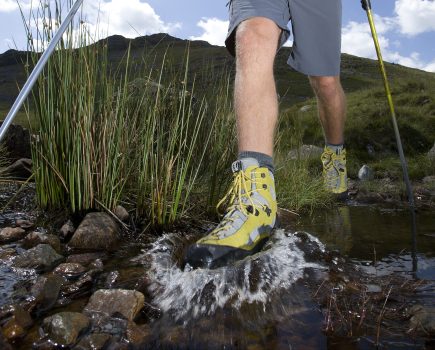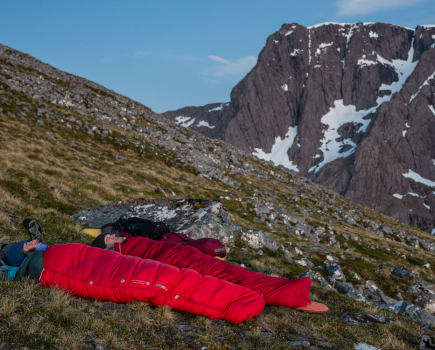Tristan Gooley, author of The Walker’s Guide to Outdoor Clues and Signs shares five of his favourite tricks
[1] The Wedge Effect
Trees grow shorter when exposed to wind and our prevailing wind direction is from the south-west. This means that if you look at woods on hills and ridges in the distance you can often use these as a compass if you learn how to spot the ‘wedge effect’. The height of the woods slopes up from the SW side.
[2] Morning weather checks
There are two morning weather phenomena that can catch walkers out. The first is that mist early in the morning often leads people to believe it will be a poor day’s weather, but if the wind is calm this mist is likely to have been caused by clear skies overnight and may herald continued very good weather as soon as it clears. The second is that it is very easy to underestimate the wind first thing in the morning. Overnight a layer of still air sits close to the ground and first thing in the morning this can insulate us from the winds just above it. At the start of the day, it is best to look for clues as to what the wind is doing higher up – the tops of the tallest trees or the motion of low clouds.
[3] The Cut Through
Whenever a path forks unexpectedly, a question may well pop into our mind shortly afterwards – did we take the correct prong? At the moment this happens have a close look at the ground in the direction of the other path and you will probably spot subtle signs of where people have come to the conclusion that they’ve got it wrong and taken a short-cut across to the other path, instead of heading back to the junction. Even when a close look at a map shows you that you’ve made the right call and are still on track, it is still fun to spot these cut-throughs – because we’ve all been there!
[4] Squelch checks
Whenever your boot goes squelch, take a second to look at the plants around you. All plants are sensitive to levels of moisture in the ground, some thriving in drier ground, others in wetter ground, like soft rush (juncus effusus). But even without learning the names of any plants it is very easy to learn to spot wet ground from shifts in grass types
[5] Noticing silence
It is very rewarding to tune into birdsong and bird calls. All around us, the birds are trying to tell each other all sorts of things and we can eavesdrop on these messages. But silences can be just as revealing. If we learn to notice when the background sounds of the birds falls away and we’re enveloped in silence, this is a sign that something is up, often quite literally. Birds make short alarm calls (try saying ‘tk-tktk-tk’ ) if they are worried about something in their environment, but if there is an imminent threat, like a bird of prey directly overhead they
tend to go silent, giving us a tip to look up and spot the hawk.
Find out about Tristan’s natural navigation courses and books at: www.naturalnavigator.com
Main image by Neil Gower.







